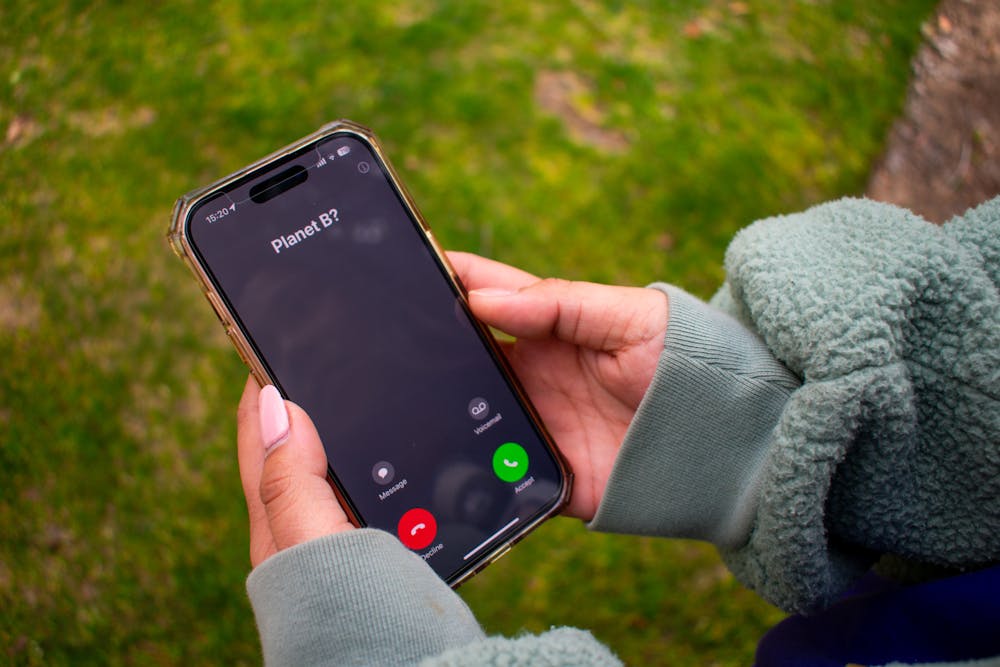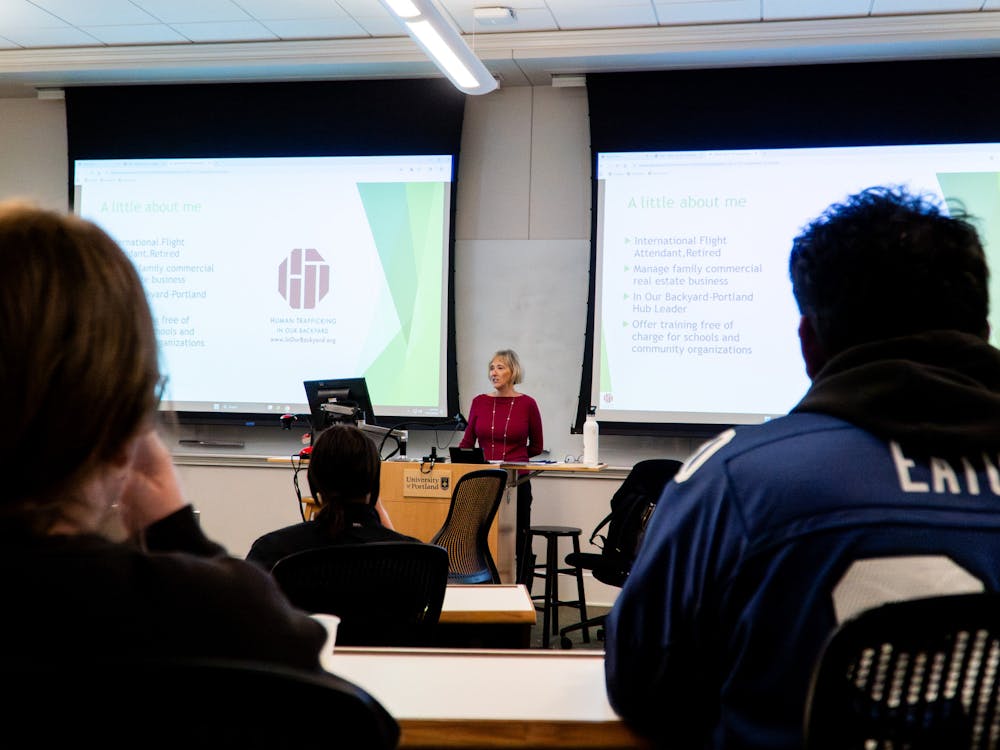An unexpected spring teaser visited Portland mid-March with clear skies and a flurry of blooming cherry blossoms. Among flying frisbees and dogs off-leash, UP students reclined beneath the trees’ pink-white petals in a moment of relaxation.
For centuries, the cherry blossom has been a symbol of the shortness of time. But as warmer temperatures push bloom dates forward, the tree has also become a symbol of climate change — the root of the increasing prevalence of what’s called eco-anxiety, especially among young people.
Here’s what eco-anxiety is and what students can do about it.
What it is
The American Psychological Association (APA) defines eco-anxiety, also called climate anxiety, as a “chronic fear of environmental doom.”
But fear doesn’t fully capture the different forms eco-anxiety can take. For junior environmental science major Emma Niemela, it implies a slew of other feelings, too.

“To me, anxiety is very different than fear,” Niemela said. “Because fear is very targeted to a specific thing, but with eco-anxiety, I don’t know, there’s so many things. There's anger that comes up — a lot of sadness and grief I think is really important.”
But given the scale of the climate crisis, eco-anxiety also entails feelings of hopelessness. For instance, many younger social media users are familiar with “doomscrolling,” or the overconsumption of negative news online — often around climate issues.
For junior environmental science major and SLUG President Tommy Garcia, doomscrolling magnifies that sense of hopelessness.
“It's so easy to approach it [social media] with a positive mindset — and then you fall into like, ‘Oh my God, everything on my feed is like the issues that are happening,’” Garcia said. “And yeah, parts of those are like, ‘Here's how we fix these issues.’ But if all you're seeing every day is fixes, fixes, fixes, it feels like everything's wrong all the time.”
But more than seeing environmental disasters online, lived experiences of the impacts of climate change can also exacerbate eco-anxiety, professor of environmental science Kali Abel says.
“We've got students on campus who have faced the impacts of climate change directly, whether that's wildfires or extreme heat,” Abel said. “They're seeing those impacts in the communities that they're coming from. They’re seeing them here in Portland, and that level of anxiety is founded in a lived experience.”
In the past four years, several Pilots experienced climate disasters firsthand like the 2023 California floods, wildfires that ravaged over 2 million acres across California and Oregon and in August 2023, the fire in Lahaina, Hawaii claimed 100 lives and left the town in ruin ― a disaster that hit close to home for many UP students.

But Director of Student Wellness Greg Peterson says even small experiences can have an impact.
“There have become these sort of almost small experiences of a changing world that build up over time that people begin experiencing,” Peterson said. “And then after times of reflection, and then also experiencing things via media, that people begin worrying — and they begin worrying about their welfare.”
And worries grow amidst the crisis, many, like Garica, feel overwhelmed by the sense of responsibility to do something.
“It's our job to change the system so that this doesn't continue to happen,” Garcia said. “It's definitely that feeling of like responsibility that has just been put on you, you know — ‘What do you do?’”
What students can do
For Peterson, managing eco-anxiety involves focusing on what you can control rather than what you can’t.
“Anxiety, oftentimes, is focusing our attention on a lot of stuff we can't change or hoping something is going to be different and then not doing anything about it,” he said. “So if I'm working on something to try and moving in a direction where I feel like I might be actually able to make an impact, to do something different to kind of change the world — like that helps.”
Making an impact might sound daunting, especially for undergraduates. But echoing Peterson, Abel thinks students are ready to address climate change.
“You know, it's kind of an old-school way of thinking — to think you've got to wait until you have this unidentified level of experience or this pinnacle of achievement that says, ‘Yes, you can now contribute,” Abel said. “I think that's something we've got to dismantle. I mean, at the intersection of people's passions and the skills and experiences they bring to the table, you're ready to go now.”
Students can get involved on campus with Ecology Club and the Student-Led Unity Garden (SLUG), which promote climate education and hands-on experience. At SLUG, where Garcia is club president, he feels he can make an impact — however small.

“In my little corner, in my little SLUG garden, I'm doing regenerative farming,” Garcia said. “And if I can teach one other person about that and light that fire for them too, and spark that passion, then that's making a difference.”
And for Niemela, who is SLUG treasurer, finding community in places like SLUG is key to reducing eco-anxiety.
“I think community is like the most important thing,” Niemela said. “And so having these different student groups, and having students leading the groups is super cool — to get to see my friends and my peers doing really cool stuff and engaging with important issues and the community. I think that's a really good way to find hope and to find kind of a purpose.”
Ultimately, Niemela emphasizes an optimistic view, channeling love and empathy towards easing the anxiety.
“Finding what you're passionate about and finding radical empathy and love for the world is such a powerful thing that it makes the anxiety and the doom a lot easier to deal with,” she said.
Students struggling with eco-anxiety can also visit the Wellness Center for support.
Riley Martinez is Copy Editor for The Beacon. He can be reached at martinri24@up.edu.








